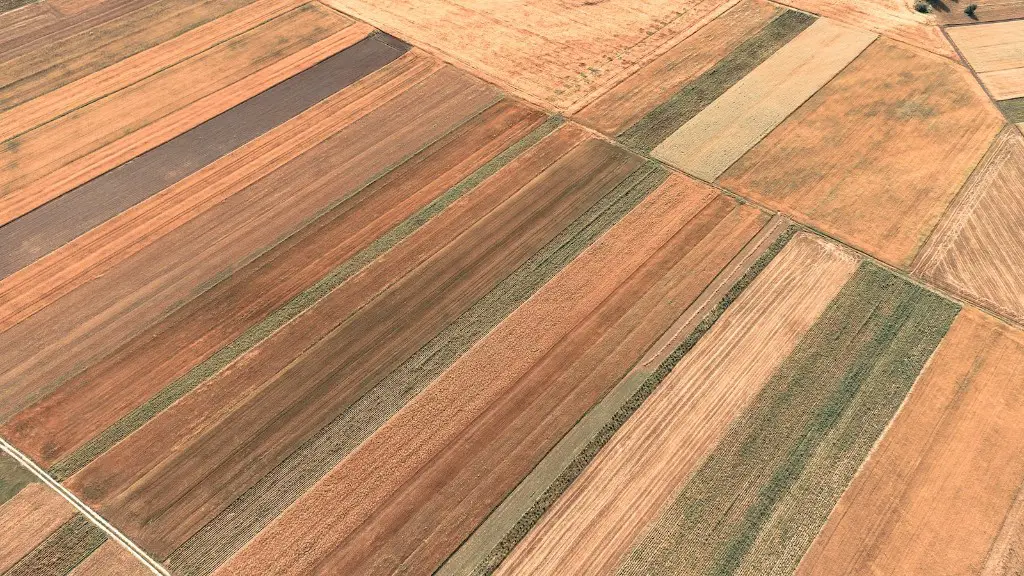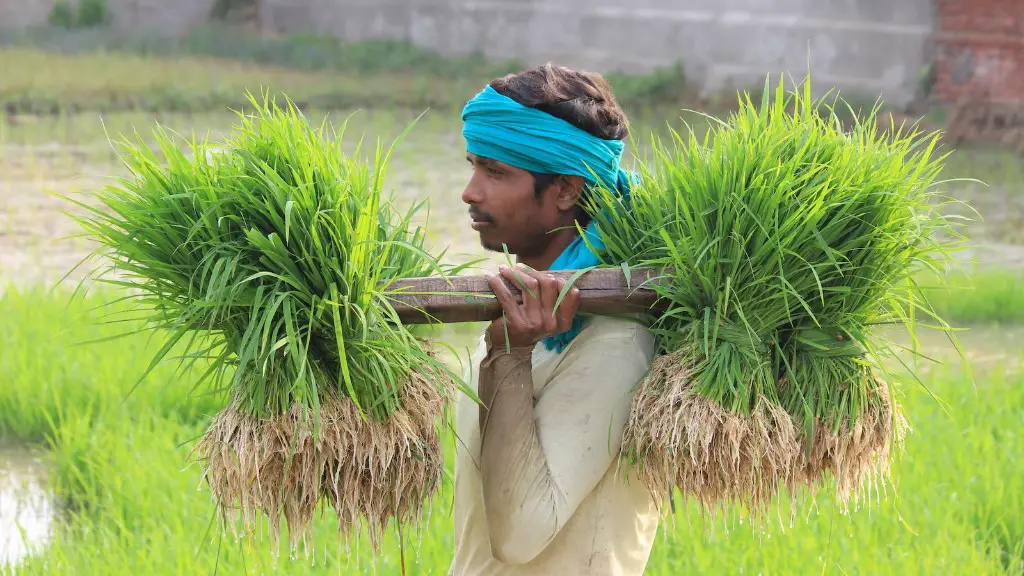Biodiversity plays an important role in helping agriculture. Biological diversity, or the variety of different species of plants and animals found in an area, helps maintain the balance of the environment and supports food production. The benefits of biodiversity to agriculture are both direct and indirect.
The main direct benefit comes from the use of native species. Native species have adapted to their environmental conditions, so they require less input from farmers to produce a good crop yield, or to keep animals healthy. Native species also tend to be resistant to environmental challenges, such as pests, diseases, and droughts. This makes them more reliable for farmers, as well as providing a robust, sustainable resource for the environment.
The indirect benefits of biodiversity to agriculture include the provision of pollinators, such as bees and other insects, which help to spread the pollen of plants and maintain their genetic diversity. This is important for plant health, as well as crop yield, as genetic diversity allows plants to be more resistant to disease and other challenges. Other indirect benefits include the maintenance of healthy soils, provision of water, and the breakdown of toxins, which can be essential for productive farming.
In addition, biodiversity can help to reduce the impacts of pests, such as weeds and disease-causing organisms. By providing habitats for predators, such as birds and other animals, the numbers of pests in the area can be kept under control, reducing their impact on crops. Similarly, biodiversity can help to enrich the soil and provide natural fertilizers for plants.
Furthermore, biodiversity can provide the basis for a wide range of products for agriculture, either directly or indirectly. The use of native species for food, medicines, fertilizers, or construction materials can provide an income for farmers and a boost to rural communities. As well as providing products, biodiversity can offer services, such as nutrient cycling, water delivery, and soil quality maintenance.
Types of Biodiversity in Agriculture
Biodiversity can be divided into two main types: genetic biodiversity and species diversity. Genetic biodiversity refers to the variety of genes within a species, while species diversity refers to the variety of species found in an area. Both of these types of biodiversity are important for agriculture and are essential for healthy farming.
Genetic biodiversity is important as it allows plants and animals to be more resilient to environmental changes and less prone to disease. It is also important for maintaining crop yields, as plants with more genes are more able to resist pests and diseases. For example, the genetic diversity of maize has been linked to higher yields, as it allows maize to adapt to different environmental conditions.
Species diversity is important for its direct and indirect benefits to agriculture. Different species can interact in beneficial ways, such as providing pollination for plants and providing food for animals. They can also provide a range of resources for humans, such as food and materials for constructing shelters. In addition, different species can act as indicators of environmental health, as a lack of species diversity can indicate environmental problems that could affect agricultural production.
Finally, species diversity can help maintain soil fertility by adding organic matter to the soil and providing an environment where beneficial microorganisms can thrive. This helps to ensure that soils remain rich in nutrients, improving the quality and productivity of soils.
Benefits of Biodiversity to Agriculture
Biodiversity can offer a range of benefits to agriculture, such as providing pollinators, reducing pest numbers, enriching soils, and providing a range of resources and services. These benefits are both direct and indirect, and can help to maintain a productive and resilient agricultural system.
The direct benefits of biodiversity to agriculture come from the use of native species, which tend to be more resistant to changing environmental conditions and are more efficient at providing resources. There are also indirect benefits from providing pollinators, reducing pests, enriching soils, and providing a range of resources and services. These benefits can all contribute to a more resilient and productive agricultural system.
In addition, biodiversity can help to conserve genetic variability, which is important for crop and livestock production. A variety of genes can lead to increased yields and greater resilience to disease and other environmental challenges. By conserving genetic variability, farmers are more able to maintain the integrity of their crops and livestock and ensure the long-term sustainability of their farms.
Biodiversity can also provide a source of income for farmers. The use of native species can provide a range of products, such as food, medicines, and construction materials. It can also provide services, such as nutrient cycling, water delivery, and soil quality maintenance. These products and services can provide farmers with an additional source of income and help to increase their income stability.
Finally, biodiversity can act as a buffer against environmental change. By preserving biodiversity, farmers are able to maintain a stable, resilient agricultural system and are better able to adapt to changing environmental conditions. This can be particularly important in times of drought and other extreme weather events, as biodiversity can provide a resilient resource for farmers.
Conservation of Biodiversity
In order to ensure that the benefits of biodiversity to agriculture are maintained, it is important to ensure that biodiversity is conserved. This can be done through a variety of methods, such as providing a range of habitats for native species, regulating land use, and protecting areas of high biodiversity. These methods can help to ensure that species and genetic variability are preserved, allowing for a more resilient, productive agricultural system.
In addition, land management practices, such as utilizing sustainable agricultural practices or creating agroforestry systems, can help to promote biodiversity. These methods can use native species to create productive and resilient farming systems, as well as helping to conserve biodiversity.
Finally, farmers can also contribute to the conservation of biodiversity by using native species and relying on natural processes, such as pollination from insects, rather than relying on artificial inputs. This can help to reduce the impacts of pests and diseases, conserve genetic variability, and ensure that a range of resources and services are available to farmers.
Role of Government
The role of governments in promoting and conserving biodiversity is crucial. Governments can help to protect and conserve areas of high biodiversity, such as national parks and protected areas, as well as providing incentives for farmers to use sustainable agricultural practices. Governments can also encourage the use of native species on farms by providing subsidies and tax incentives.
In addition, governments can promote research into biodiversity conservation and its benefits to agriculture. This research can provide important insights into areas such as the impacts of different land management practices, the effectiveness of native species, and the benefits of conserving genetic variability.
Furthermore, governments can play an important role in raising awareness about biodiversity and its benefits to agriculture. This can help to create a culture of appreciation for biodiversity and ensure that it is valued and preserved.
Finally, governments can work with the private sector to ensure that biodiversity is conserved and its benefits to agriculture are maximized. Private companies can invest in projects to conserve biodiversity and promote its benefits to agriculture, such as providing pollinators, reducing pest numbers, and enriching soils. This can help to ensure that biodiversity is preserved and its benefits to agriculture are fully realized.
Conclusion
Biodiversity plays an important role in helping agriculture. It provides both direct and indirect benefits, such as providing pollinators, reducing pest numbers, enriching soils, and providing a range of resources and services. In order to ensure that the benefits of biodiversity are maximized, it is important to ensure that it is conserved and managed in a sustainable way. Governments, as well as the private sector, have an important role to play in promoting and protecting biodiversity and its benefits to agriculture.





